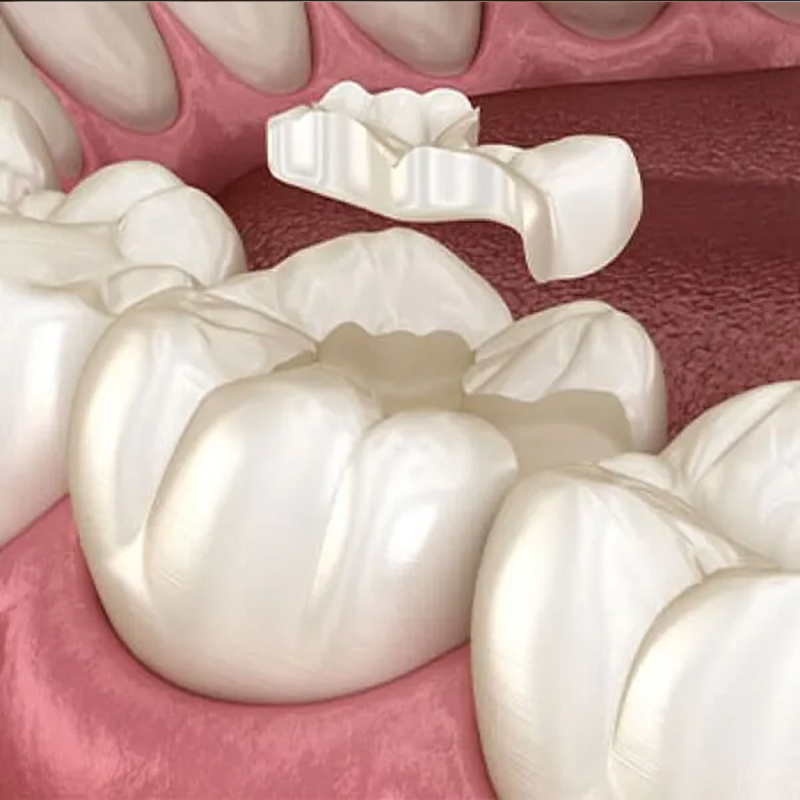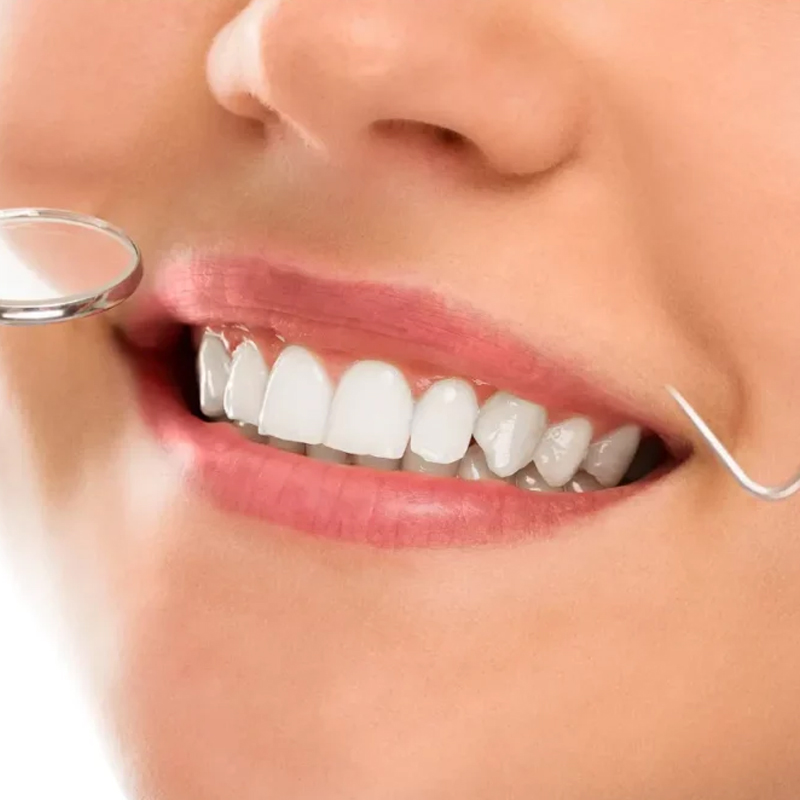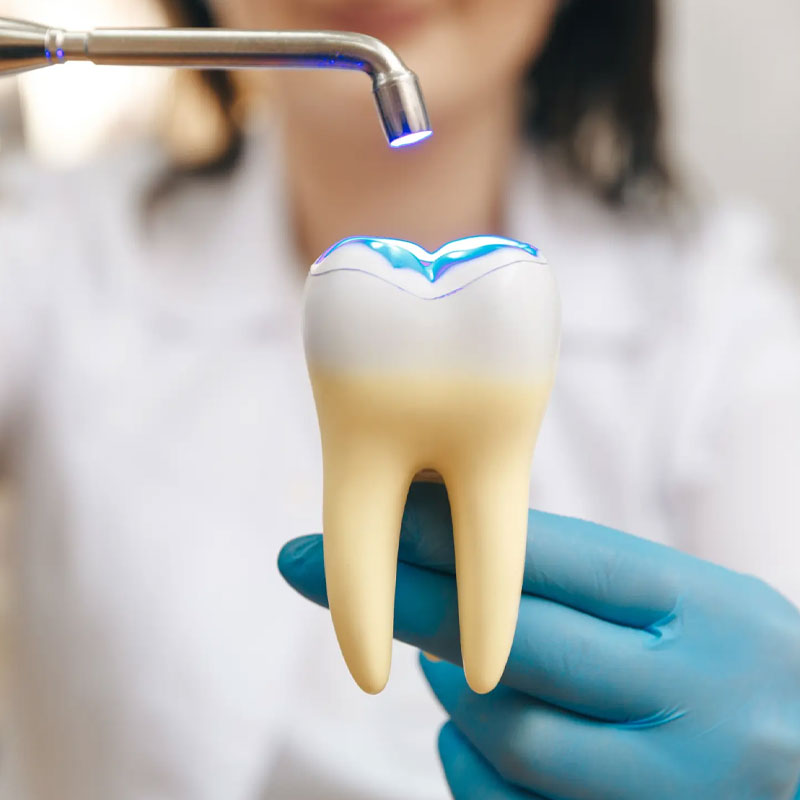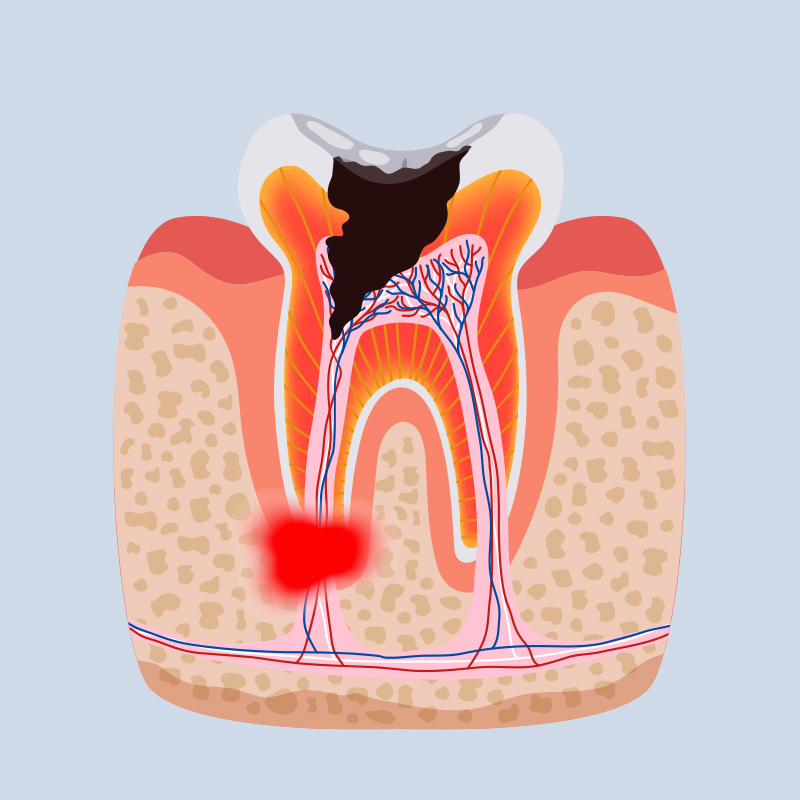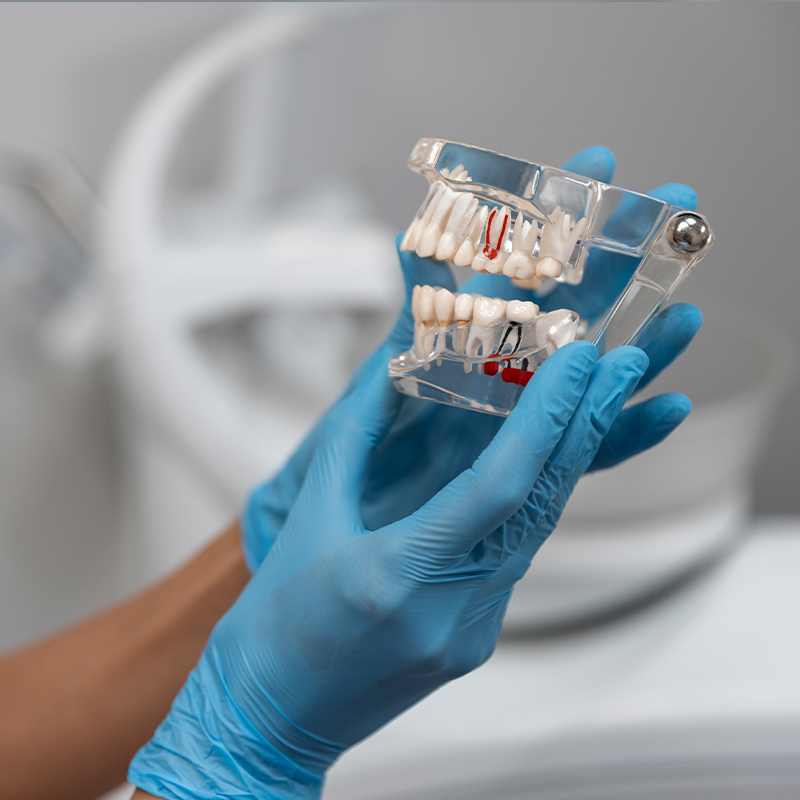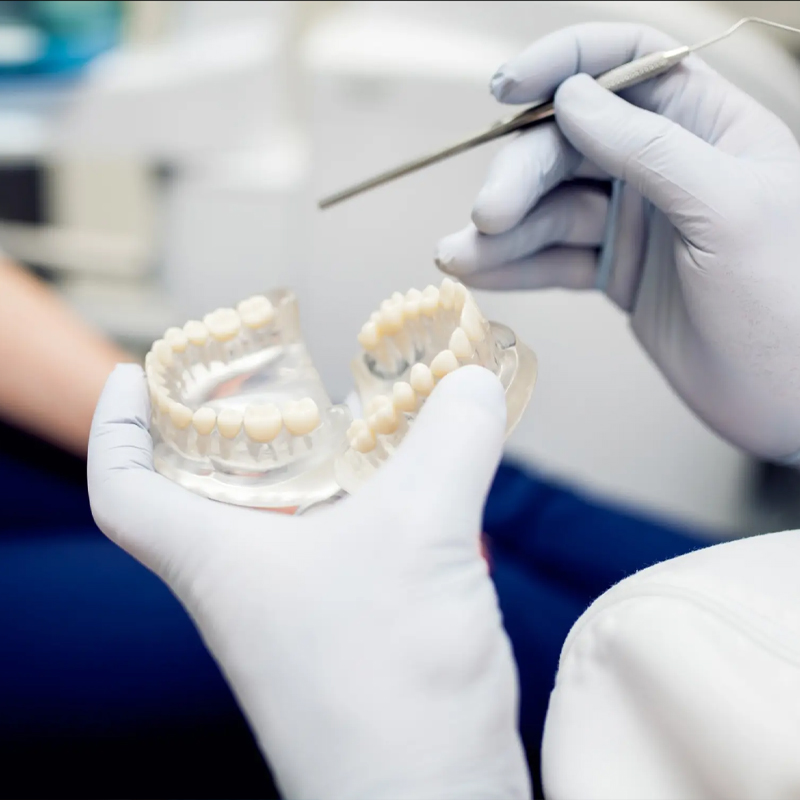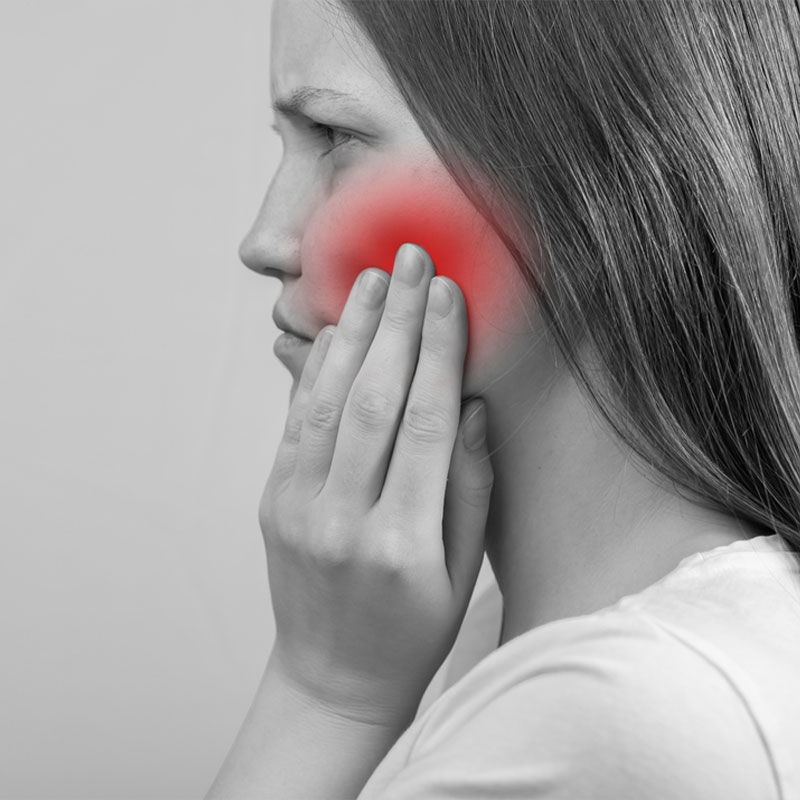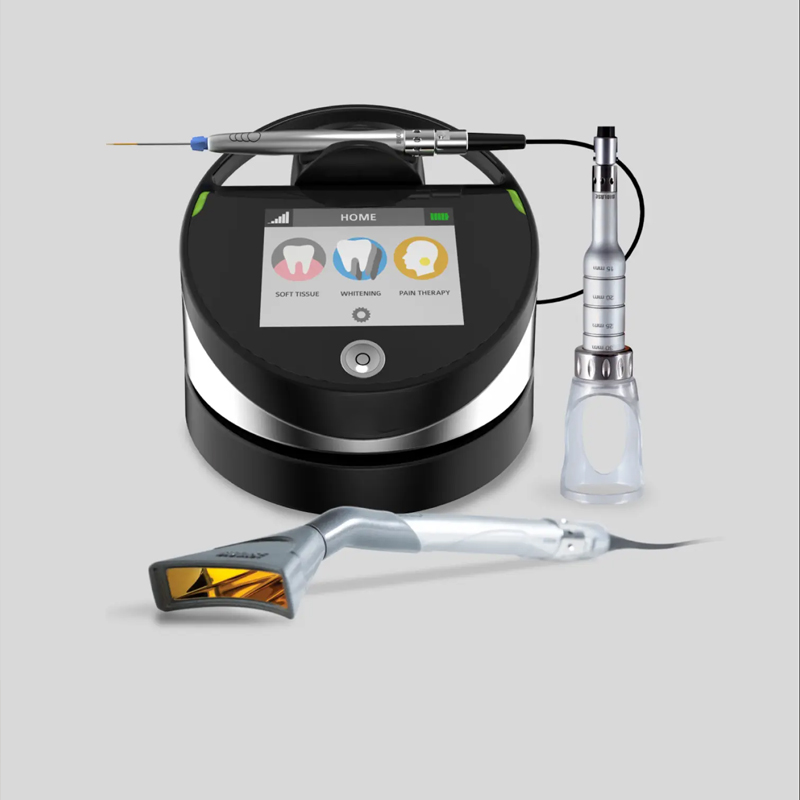Expert Care from Endodontists in Qatar
Keeping Your Teeth Well Rooted with Expert Endodontists in Qatar — Protecting Your Natural Teeth and Restoring Your Healthy, Confident Smile
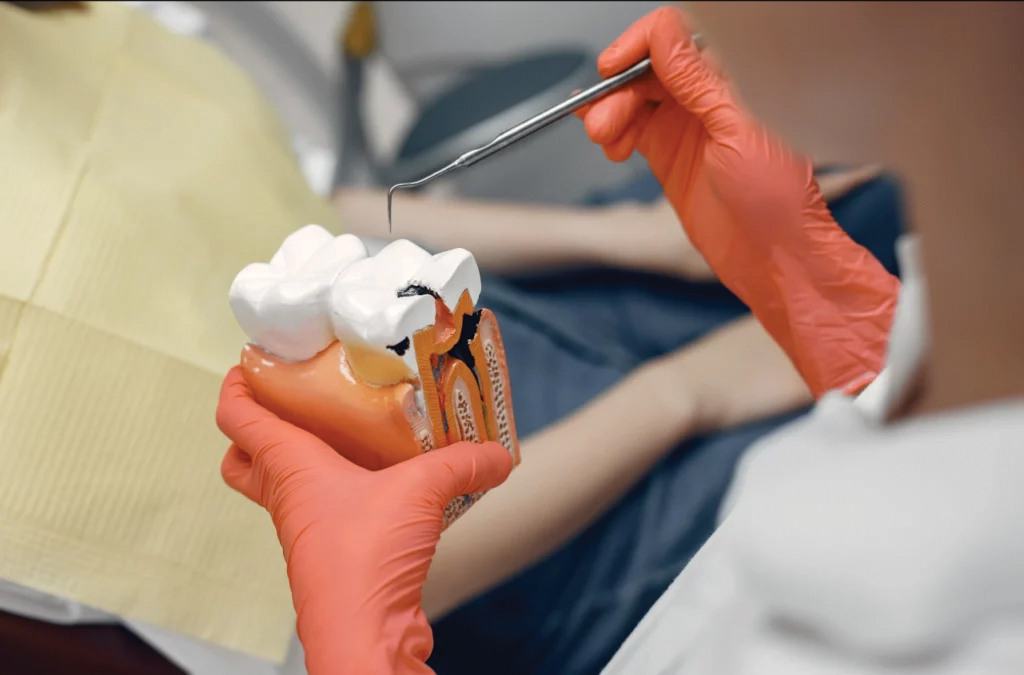
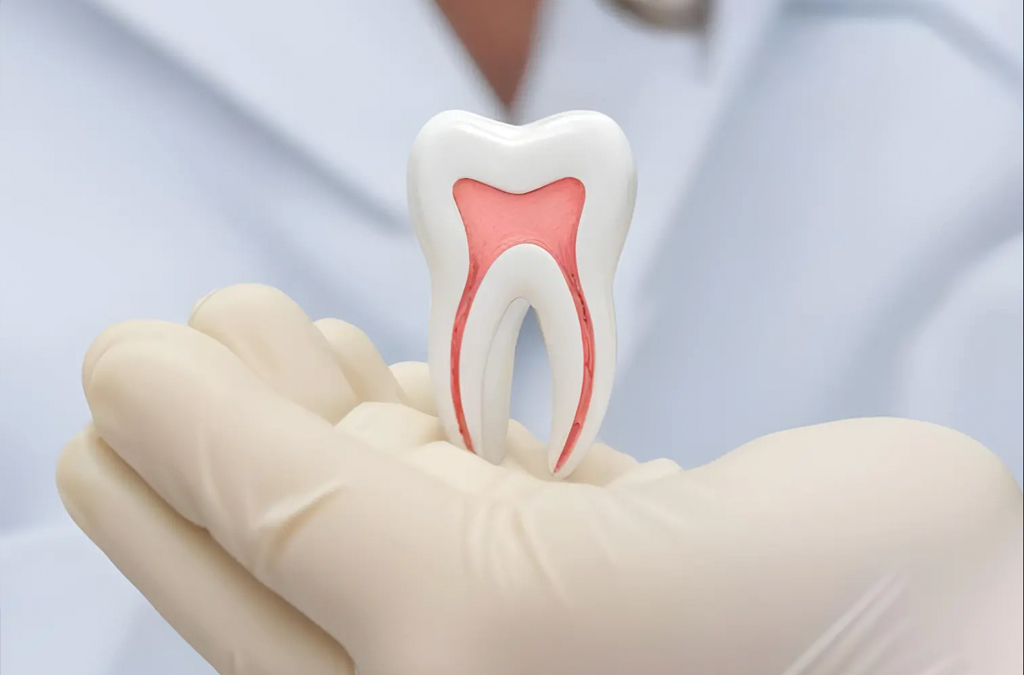
What is Root Canal Treatment?
Root canal treatment is a dental procedure designed to eliminate bacteria from an infected root canal and save the natural tooth. Additionally, the treatment is structured to prevent future reinfection. During the procedure, the inflamed or damaged pulp is removed, and the core of the tooth is thoroughly cleaned, disinfected, filled, and sealed. By preserving the natural tooth, root canal treatment can alleviate dental pain and prevent the need for extraction.
When do I need a Root Canal?
- Severe toothache
- Crooked or irregularly shaped teeth
- Sensitivity to hot or cold food/drinks
- Swollen or tender gums
- Chipped or cracked tooth
- Recurring pimples on the gums
Benefits of a Root Canal Treatment
- It helps to prevent infection from spreading to other parts of the teeth.
- It reduces the risk of damage to the jawbone.
- It eliminates the need for tooth extraction.
- Swollen or tender gums
- Recurring pimples on the gums
Root Canal Treatment
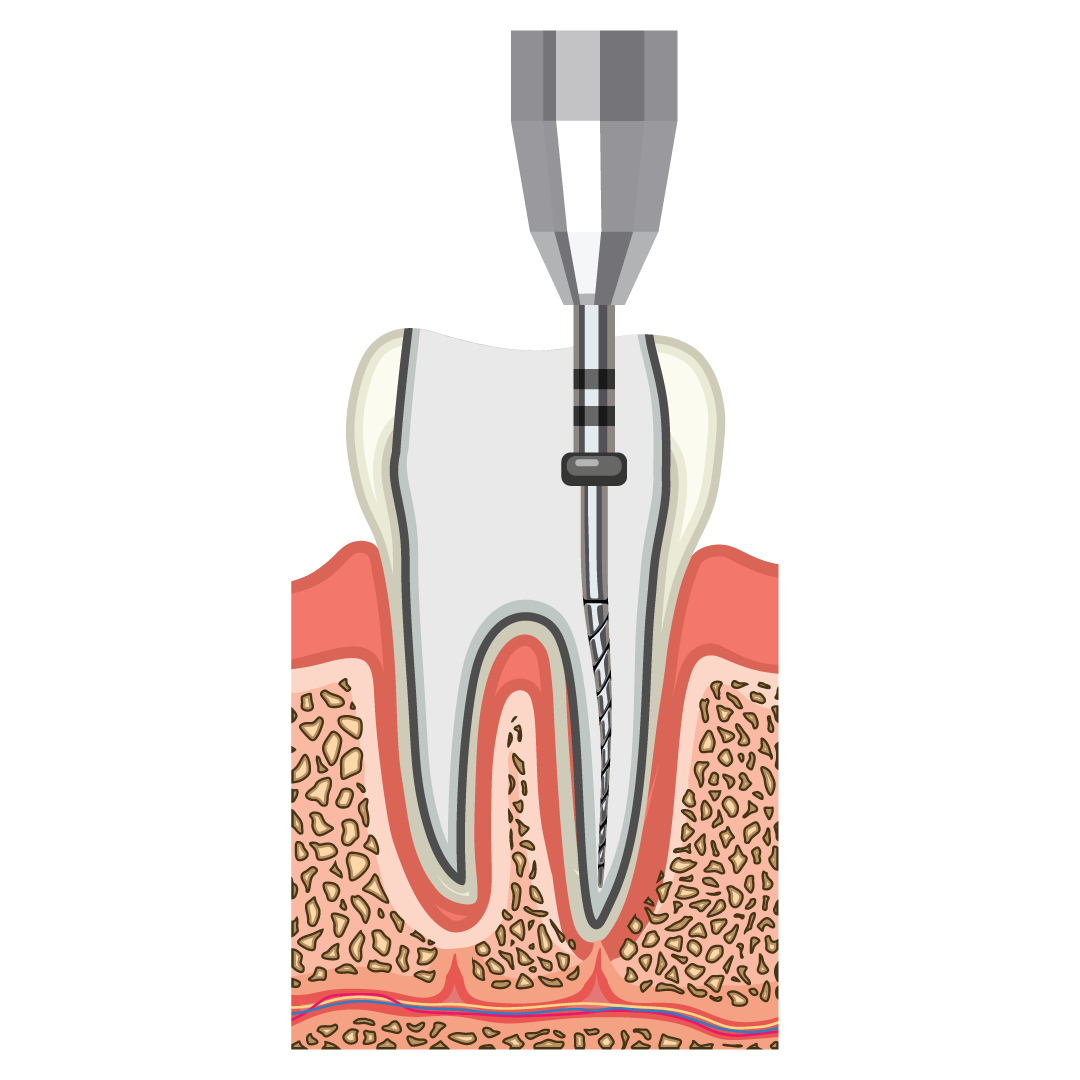
Infected tissue removed Canal cleaned with Endodontic file
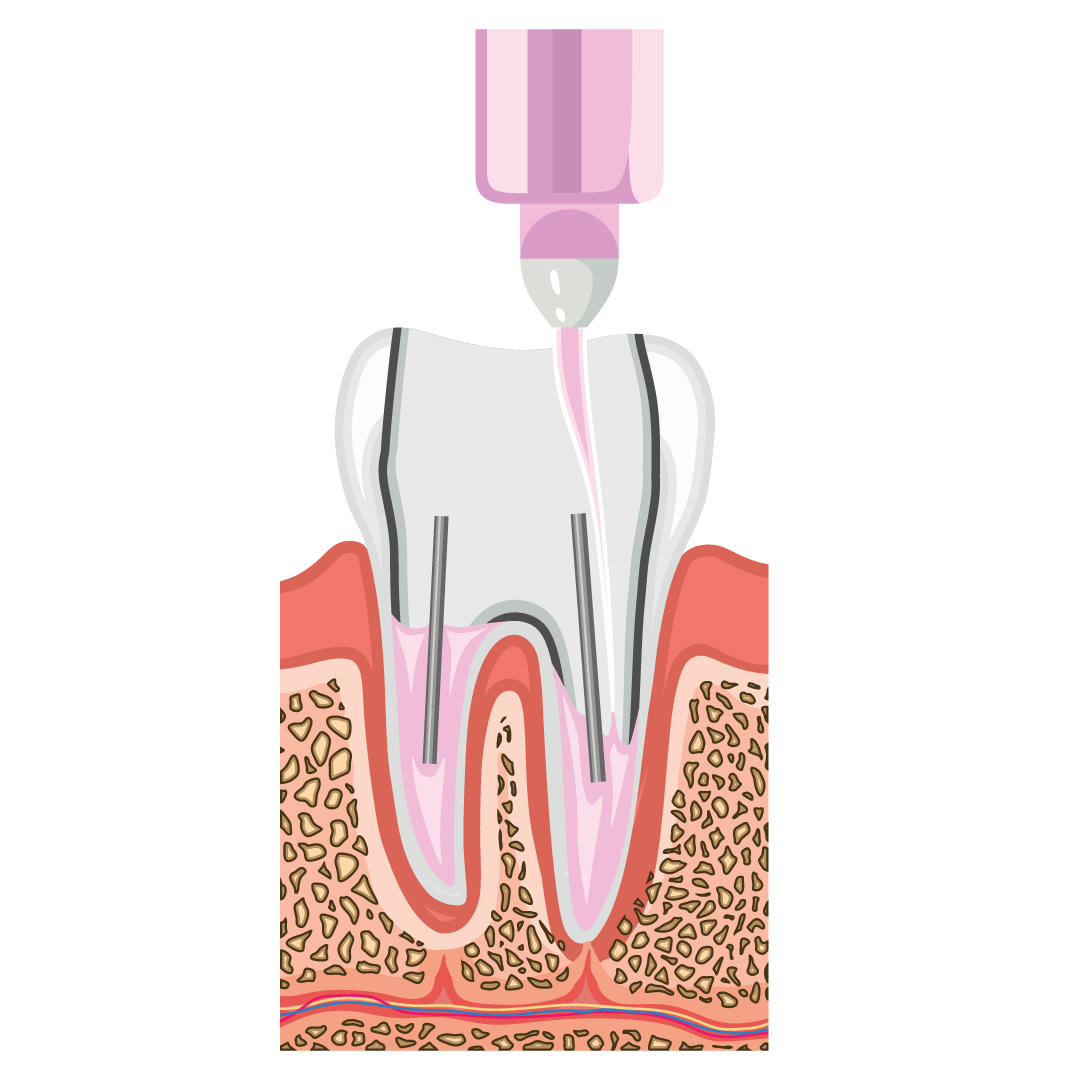
Canal filled with a permanent material with plugger
When a patient reports to our clinic complaining about pain, we first evaluate their history and perform a comprehensive oral examination. Additionally, the endodontist might be required to run a few tests like a cold test, heat test, electric pulp testing, percussion, or palpation testing. Thereafter, radiographs are generated for a proper diagnosis, in order to plan an effective treatment.
The treatment steps that follow are as follows:
- The tooth is first numbed with the help of local anesthesia.
- After the area has been sufficiently numbed, the endodontist drills into the tooth to remove the infected pulp.
- The inside of the tooth’s roots is then cleaned and sterilized.
- This is followed by the cleaning and shaping of the root canals, with the help of certain files and solutions.
- The root canals are then filled with an inert material called Gutta Percha, and the access opening is closed with a filling.
The time taken for this procedure can vary, depending on the complexity of the root canal(s) and the severity of the infection. While some procedures might be completed between half an hour to two hours within a single or over multiple sessions, in cases where the endodontist anticipates that more time would be needed to clean, shape and disinfect the root canal(s), multiple sessions might be required. On the whole, root canal treatment has a success rate of 96% with the remaining 4% involving cases where pain and swelling is experienced due to a reinfection wherein retreatment might be required.
It is important to note that root canal-treated teeth are brittle, which is why a cap, also known as a crown, is always advised, in order to maintain their integrity and prevent further damage. This would require the shaping of the teeth and impressions to be made for the fabrication of the prosthesis, in order to ensure that the crown fits perfectly. The crown is thereafter cemented to the tooth.
Root Canal Treatment for Kids
A child’s general wellbeing and eating routine can be severely affected in the case of painful cavities or an infection. If your child’s baby tooth with a deep cavity that infects the pulp can be root canal treated, then this is the most accepted choice of treatment. Though your child’s primary teeth will eventually fall out, it is preferred to choose root canal therapy over extraction in order to maintain the space required for the developing permanent tooth below. Furthermore, the infection can cause facial swellings, fever, and can even damage the underlying permanent tooth bud if left untreated with severe infections, requiring antibiotic therapy or hospitalization.
Root canal treatment is similar for kids and adults, with some exceptions. In the case of kids, a few things should be noted as follows:
- Age-appropriate behavior management will be employed and kid-friendly tools used.
- The sessions may be longer in comparison to those for adults.
- In the case of children, the procedure is known as pulpectomy if the entire damaged pulp of the baby tooth is removed and replaced with a biocompatible material. If only some of the coronal pulp is removed and medication is placed over it to facilitate healing, then it is referred to as a pulpotomy.
- The substance used to fill the root canal is resorbable which allows for the normal resorption of the roots to facilitate the exfoliation of the primary tooth at the right age.
- In order to maintain the integrity of the treated tooth, preformed stainless steel caps are placed over it.
Recovery Process
The tooth can remain tender immediately after root canal treatment, which is why rinsing the mouth with ice-cold water and taking anti-inflammatory tablets is recommended, as this will provide relief. As a part of the treatment at this stage, a temporary filling is placed between visits to keep out saliva and debris, which needs to be protected by avoiding the consumption of hard food. After the final restoration is completed, and depending on the type used, the dentist might recommend caution while chewing for a few hours to a few days. After this stage, and once the tooth settles and is protected by a crown, there are hardly any restrictions to using the root canal-treated tooth and consuming any kind of food.



